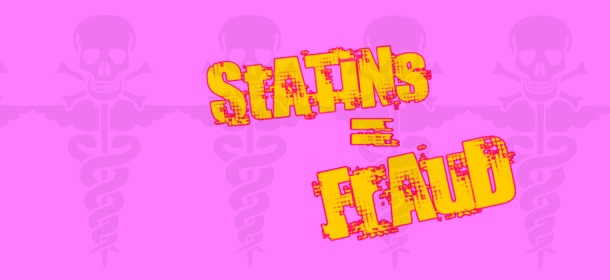Featured
DNA Is Not a Horoscope of Life
The popular notion of the double helix being the main or the only player in cellular and genetic information is quite flawed, according to this leading biologist. We are tossing mountains of cash down a bottomless research rathole in the pointless chase to find genetic causes for everything. It simply isn’t that simple.

Double Helix in Origami, by Duncan Hull
by Sujatha Byravan
Over the last week, there have been several articles celebrating the passage of 60 years since James Watson and Francis Crick published their paper in Nature describing the double helical structure of the DNA molecule. It unleashed a genomic worldview and led to the central dogma of genetics and biology. The linear flow of cellular information from DNA (deoxyribonucleic acid) to RNA (ribonucleic acid) to protein within cells, which seemed elegant in its simplicity, captured the imagination of many and is by now enshrined in science.
Ever since, largely through miscommunication by many parties, “there is a gene for condition xyz” has been taken to mean, “the gene causes xyz and the gene alone causes it.” This idea has trapped the general thinking on genetics in numerous ways, building an edifice for a molecule that supposedly unzips all by itself, self-replicates, has the blueprint for all the components of a single cell and organism, causes all diseases and defines all characteristics. Its power and hold are strong also because the idea and its implications fit like a glove within culturally inscribed, fatalistic beliefs of all hues and shades in different societies.
The strength of this acceptance is so extreme that these days it is quite normal to hear people refer to some of the deeply engrained practices within an organisation, in a business, or even in a community, having nothing to do with genes, as being “in their DNA.” Nevertheless, this popular notion of DNA being the central and the only player in cellular and genetic information is quite flawed and scientists have known this for a long time even as new evidence continues to mount opposing the perception of DNA as the master molecule. It is also no longer a simplistic genes vs environment argument, nor do genes provide a map or blueprint that is merely set off one way or another or slightly modified by the environment; indeed “what is a gene?” is a hotly debated and unsettled question in science.
Scientific Observations
The linear model of the central dogma got slashed bit by bit when we learned that DNA molecules don’t do anything by themselves; their expression is controlled, modified and regulated at different levels by proteins, RNA, chemicals in the cells, other genes that may be close by or far away, and by the environment over time in multiple ways, and in different stages of growth, development and disease.
Genetic expression is quite plastic and the effects of multiple genes cannot be added up. While monogenic diseases, those that are controlled by a single pair of genes, make up a handful of all existing diseases, the living conditions of organisms and numerous, perhaps hundreds of genes, are implicated in each of the common health conditions.
That genetic tests claim to be able to predict or add value to one’s health by testing the probability of common health problems, such as heart disease or diabetes, or tailor one’s diet and so on and so forth is false or highly exaggerated. Prof. David Goldstein, writing about gene variants and disease in The New England Journal of Medicine says that the effect of small variations to the DNA sequence is limited, so that a very large portion of the genome is needed to explain a disease.
This leads to pointing at everything in the DNA as being responsible for a health condition, which is the same as pointing at nothing. Other scientists find that, contrary to earlier thinking that there were distinct locations for individual genes, most genes are overlapping. Based on their understanding of RNA and their role in gene expression they believe it might be time for a new definition of a gene to be put in place.
Scientists, who have been concentrating on mechanisms of inheritance and expression not related to DNA sequences—a system called epigenetics—think that we should be concentrating on gene networks. Furthermore, the architectures of cellular components other than DNA and RNA are also perceived as important, and the trajectory that is selected by a cell and organism under environmental stresses is deemed to play a big role. Still others are working on different ways in which epigenetic inheritance is taking place and realising that these are not rare and are likely to be numerous and part and parcel of normal development. These kinds of cellular networks and mechanisms may turn out to be the missing elements in predicting disease.
Paradigm shift
This complexity in our understanding of inheritance and genetic networks challenges various applications, including our ideas on evolutionary selection and how this might actually occur on whole organisms and molecules. The point is that this debate appears to bypass the world at large and is seemingly not bringing about huge changes in applications or the fanfare surrounding DNA. Perhaps these shifts occur at a different pace in various fields of inquiry.
More importantly, the central dogma and the genetic horoscope theory have a lot invested in them by the genetic industry of testing, genomic medicine, plant genomics, and funding priorities by major government and private donors. If we changed our approach and were to study cellular genetic networks, the effects of epigenetics, the changes and effects of the environment or even the rare mutations that lead to large effects, perhaps we would learn more about our health and free ourselves from the age of DNA determinism.
(Sujatha Byravan is a biologist based in Chennai. She was president of the Council for Responsible Genetics, Cambridge, Massachusetts.)
Gaia Health is pleased to republish this, originally titled Sixty years of a DNA world view, with the author’s consent.
Tagged conventional medicine, dna, dna fatalistic beliefs, dna horoscope, dna life, fatalistic beliefs, gene redefinition, genes overlap, genetic cause of disease, genetics, genetics research, modern medicine, no genetic cause of disease, science
Related Posts
-
http://www.facebook.com/people/Chris-Hemmings/100000812366813 Chris Hemmings
-
/ Heidi Stevenson
-
http://www.facebook.com/people/Chris-Hemmings/100000812366813 Chris Hemmings
-
-
-
http://www.facebook.com/sara.reimold Sara Reimold














